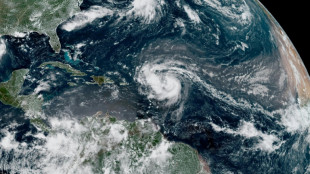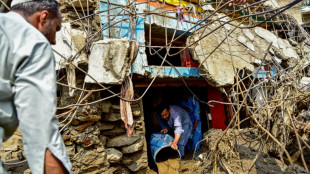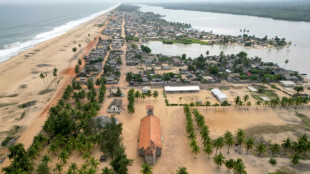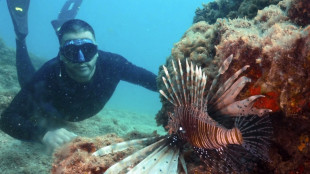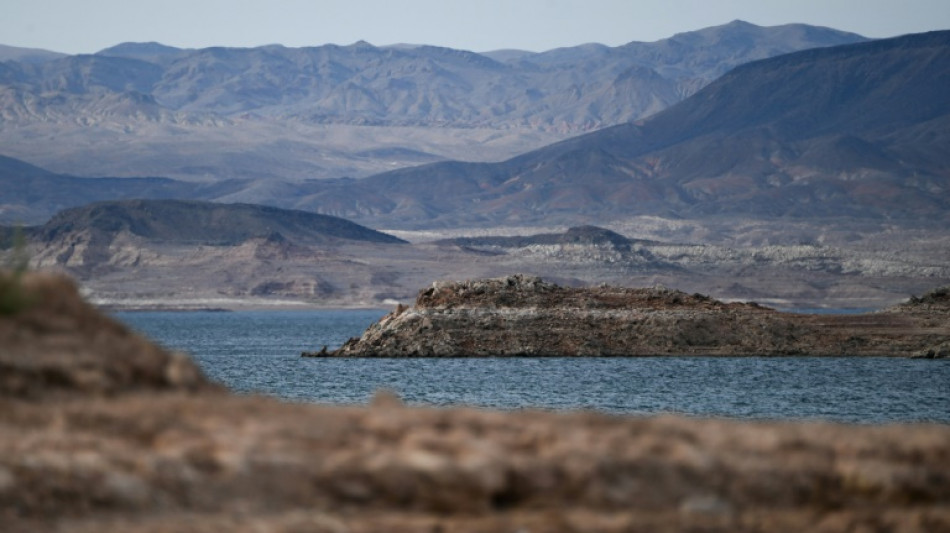
-
 Two right-wing candidates headed to Bolivia presidential run-off: projection
Two right-wing candidates headed to Bolivia presidential run-off: projection
-
'Skibidi' and 'tradwife': social media words added to Cambridge dictionary

-
 Akie Iwai joins twin sister Chisato as LPGA winner with Portland Classic triumph
Akie Iwai joins twin sister Chisato as LPGA winner with Portland Classic triumph
-
LIV's DeChambeau joins Henley and English as US Ryder Cup qualifiers

-
 No.1 Scheffler outlasts MacIntyre to win BMW Championship
No.1 Scheffler outlasts MacIntyre to win BMW Championship
-
Swiatek swamps Rybakina, to face Paolini in Cincinnati final

-
 Atletico beaten by Espanyol in La Liga opener
Atletico beaten by Espanyol in La Liga opener
-
PSG get Ligue 1 title defence off to winning start

-
 Rahm edges Niemann for LIV season title as Munoz wins at Indy
Rahm edges Niemann for LIV season title as Munoz wins at Indy
-
Seven killed in latest Ecuador pool hall shooting

-
 Mass rally in Tel Aviv calls for end to Gaza war, hostage deal
Mass rally in Tel Aviv calls for end to Gaza war, hostage deal
-
Terence Stamp: from arthouse icon to blockbuster villain

-
 World No. 3 Swiatek powers past Rybakina into Cincinnati WTA final
World No. 3 Swiatek powers past Rybakina into Cincinnati WTA final
-
Tens of thousands of Israelis protest for end to Gaza war

-
 Terence Stamp, 60s icon and Superman villain, dies
Terence Stamp, 60s icon and Superman villain, dies
-
Arsenal battle to beat Man Utd, world champions Chelsea held by Palace

-
 Arsenal capitalise on Bayindir error to beat Man Utd
Arsenal capitalise on Bayindir error to beat Man Utd
-
'Weapons' tops North American box office for 2nd week

-
 Newcastle sign Ramsey from Aston Villa
Newcastle sign Ramsey from Aston Villa
-
Terence Stamp in five films

-
 Terence Stamp, Superman villain and 'swinging sixties' icon, dies aged 87: UK media
Terence Stamp, Superman villain and 'swinging sixties' icon, dies aged 87: UK media
-
Chelsea draw blank in Palace stalemate

-
 European leaders to join Zelensky in Trump meeting
European leaders to join Zelensky in Trump meeting
-
Hopes for survivors wane after Pakistan flooding kills hundreds
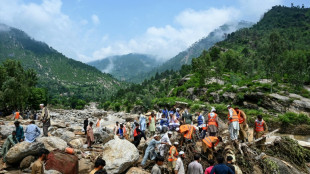
-
 Six in a row for Marc Marquez with victory at Austrian MotoGP
Six in a row for Marc Marquez with victory at Austrian MotoGP
-
Spain PM vows 'climate pact' on visit to fire-hit region
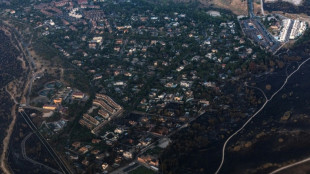
-
 Serbia's president vows 'strong response' after days of unrest
Serbia's president vows 'strong response' after days of unrest
-
Brazilian goalkeeper Fabio equals Shilton record for most games played

-
 Warholm in confident swagger towards Tokyo worlds
Warholm in confident swagger towards Tokyo worlds
-
Air Canada to resume flights after govt directive ends strike

-
 Israelis rally nationwide calling for end to Gaza war, hostage deal
Israelis rally nationwide calling for end to Gaza war, hostage deal
-
European leaders to join Zelensky for Ukraine talks with Trump

-
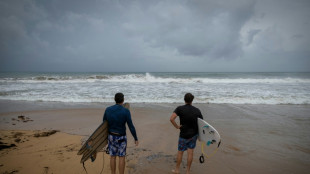 Downgraded Hurricane Erin lashes Caribbean with rain
Downgraded Hurricane Erin lashes Caribbean with rain
-
Protests held across Israel calling for end to Gaza war, hostage deal

-
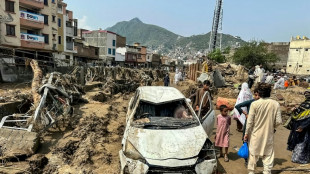 Hopes for survivors wane as landslides, flooding bury Pakistan villages
Hopes for survivors wane as landslides, flooding bury Pakistan villages
-
After deadly protests, Kenya's Ruto seeks football distraction

-
 Bolivian right eyes return in elections marked by economic crisis
Bolivian right eyes return in elections marked by economic crisis
-
Drought, dams and diplomacy: Afghanistan's water crisis goes regional

-
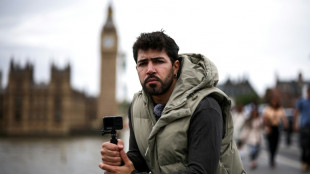 'Pickypockets!' vigilante pairs with social media on London streets
'Pickypockets!' vigilante pairs with social media on London streets
-
From drought to floods, water extremes drive displacement in Afghanistan
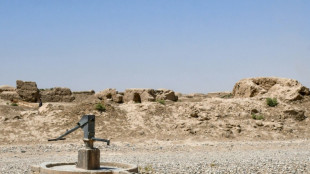
-
 Air Canada flights grounded as government intervenes in strike
Air Canada flights grounded as government intervenes in strike
-
Women bear brunt of Afghanistan's water scarcity
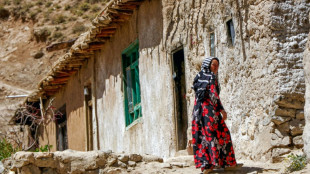
-
 Reserve Messi scores in Miami win while Son gets first MLS win
Reserve Messi scores in Miami win while Son gets first MLS win
-
Japan's Iwai grabs lead at LPGA Portland Classic

-
 Trump gives Putin 'peace letter' from wife Melania
Trump gives Putin 'peace letter' from wife Melania
-
Alcaraz to face defending champ Sinner in Cincinnati ATP final

-
 Former pro-democracy Hong Kong lawmaker granted asylum in Australia
Former pro-democracy Hong Kong lawmaker granted asylum in Australia
-
All Blacks beat Argentina 41-24 to reclaim top world rank

-
 Monster birdie gives heckled MacIntyre four-stroke BMW lead
Monster birdie gives heckled MacIntyre four-stroke BMW lead
-
Coffee-lover Atmane felt the buzz from Cincinnati breakthrough


US mega drought makes boating rough on Lake Mead
In the 15 years since Adam Dailey began boating on Lake Mead, the shoreline has receded hundreds of meters, the result of more than two decades of punishing drought that is drying out the western United States.
Launch spots that lined the edge of the lake, located outside Las Vegas, have been abandoned, and a single ramp is now the only way to get a boat in the water.
"We used to have more. So everyone's fighting to use one ramp... and still trying to figure out how to get along," said Dailey.
"It's kind of sad, what's going on. But we still come out and try to enjoy it when we can."
Lake Mead is the largest reservoir in the United States, a huge man-made body of water formed by the construction of the Hoover Dam in the early 1930s.
Its 247-square-mile (640-square-kilometer) surface area stores water for tens of millions of people and countless acres of farmland in the southwest.
But it's shrinking at a terrifying rate and now stands at just one-quarter full.
The National Park Service (NPS), which manages access to the lake, has spent more than $40 million since 2010 trying to keep the water open to boaters.
It costs them $2-3 million dollars to reconfigure the boat launch ramp every time the water levels fall another four feet (120 centimeters).
"Declining water levels due to climate change and 20 years of ongoing drought have reshaped the park’s shorelines," the NPS says on its website.
"As Lake Mead continues to recede, extending launch ramps becomes more difficult and more expensive due to the topography and projected decline in water levels."
- Bathtub ring -
A series of NPS signs show the shoreline at various points since 2001. The sign marking the level in 2021 is 300 paces from the water.
In the mud, the receding waters leave behind bottles, cans, fire extinguishers and other detritus that somehow made its way overboard in years gone by.
The rocks that form the hard edges of the reservoir offer a stark illustration of just how far water levels have fallen.
A white band of mineral deposits stains the mountainsides like the ring on a bathtub, showing where the water was at its high point after a flood in 1983.
"We used to water ski race here," Jaxkxon Zacher told AFP.
"And the island -- only the tip... was out 25 years ago. So now we can't even race here anymore. It's dropping drastically."
The growing islands in the middle of the lake point to the uneven topography of the valley that was flooded -- and the hazards that await.
"Every day someone's ripping a drive off, because last week, where there was no rock, it's now a foot down or two feet down so things are exposed," boatseller Jason Davis said.
"You've got houseboats getting beached and stuck, and people are ripping their lower units off."
And with vessels that can retail at hundreds of thousands of dollars, a weekend outing can turn into a costly mistake.
- A new job -
For some people, the risk of an accident and the sheer hassle of having to wait so long to get a boat into the water and then out again at the end of the day means Lake Mead is no longer a viable recreation option.
Below the Hoover Dam, stretches of river remain relatively unscathed by the dropping water levels.
At Willow Beach, across the state line in Arizona, kayakers frolic in the shallows, unloading water pistols on each other as 104 Fahrenheit (40 Celsius) sunshine beats down.
A small marina there offers Steve McMasters a place to stage his pontoon, just a short distance from his home in Boulder City.
"It can be a four-to-five-hour wait on weekends to get your boat out of the water (at Lake Mead), so this is big to have," he said.
"I waited like four months on a waiting list to get it. I got lucky here."
Climatologists say two decades of drought is not unheard of in the western United States, but combined with human-caused global warming, it is transforming the region.
Higher temperatures mean less moisture falls as snow on the Rocky Mountains, and what snowpack does form melts more quickly.
This leaves the Colorado River without the slow and steady feed that supplied it year-round in the centuries and millennia before the region was settled.
In climatic terms, Lake Mead is a baby; in existence for less than 90 years.
But in human terms, it is vanishing at a startling pace.
Jason Davis, the boatseller, says more people need to witness the stark changes for themselves.
"If you haven't come to see these rings, you know, you don't quite comprehend," he said.
And if the water keeps dropping?
"I'll need a new job."
O.Krause--BTB

